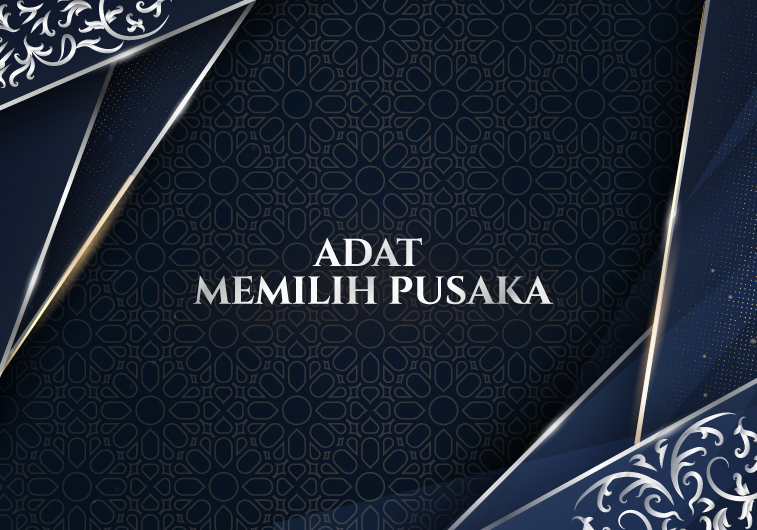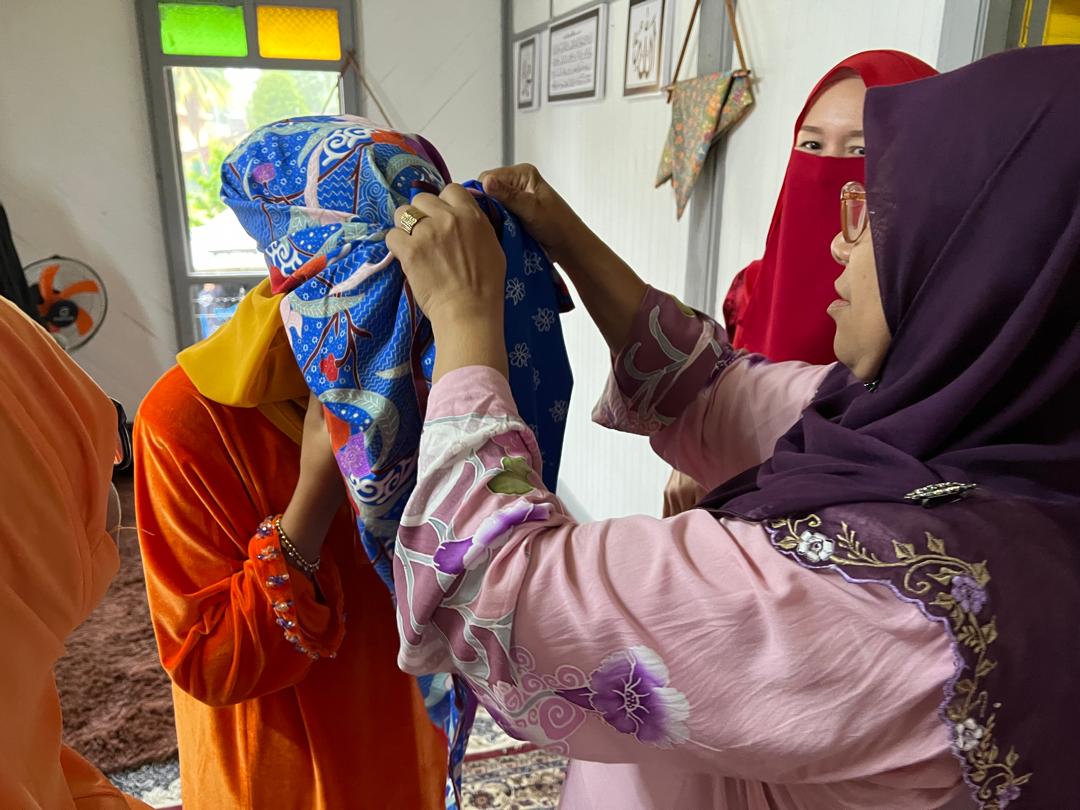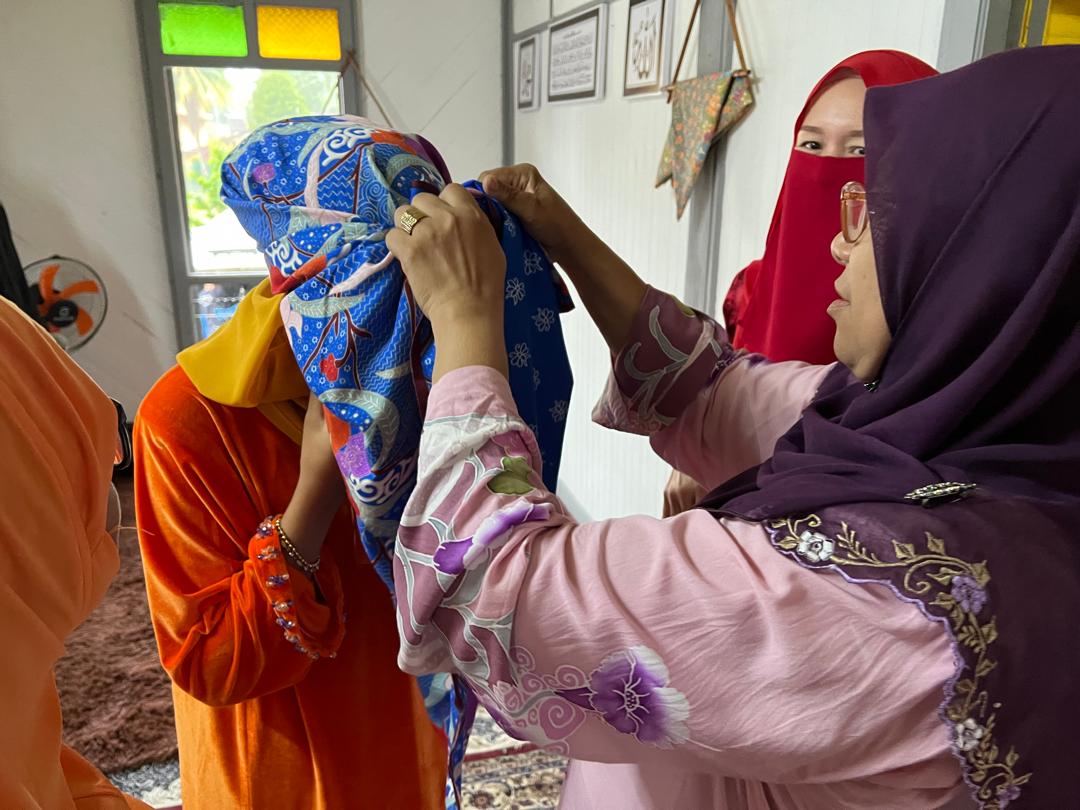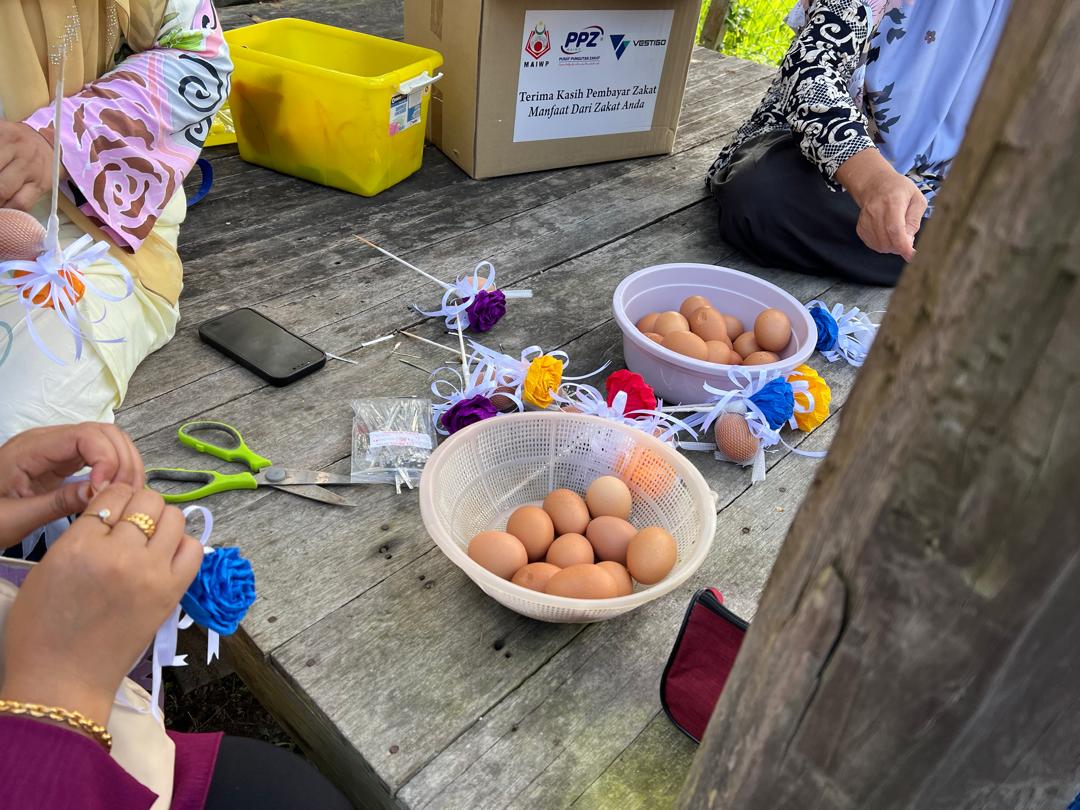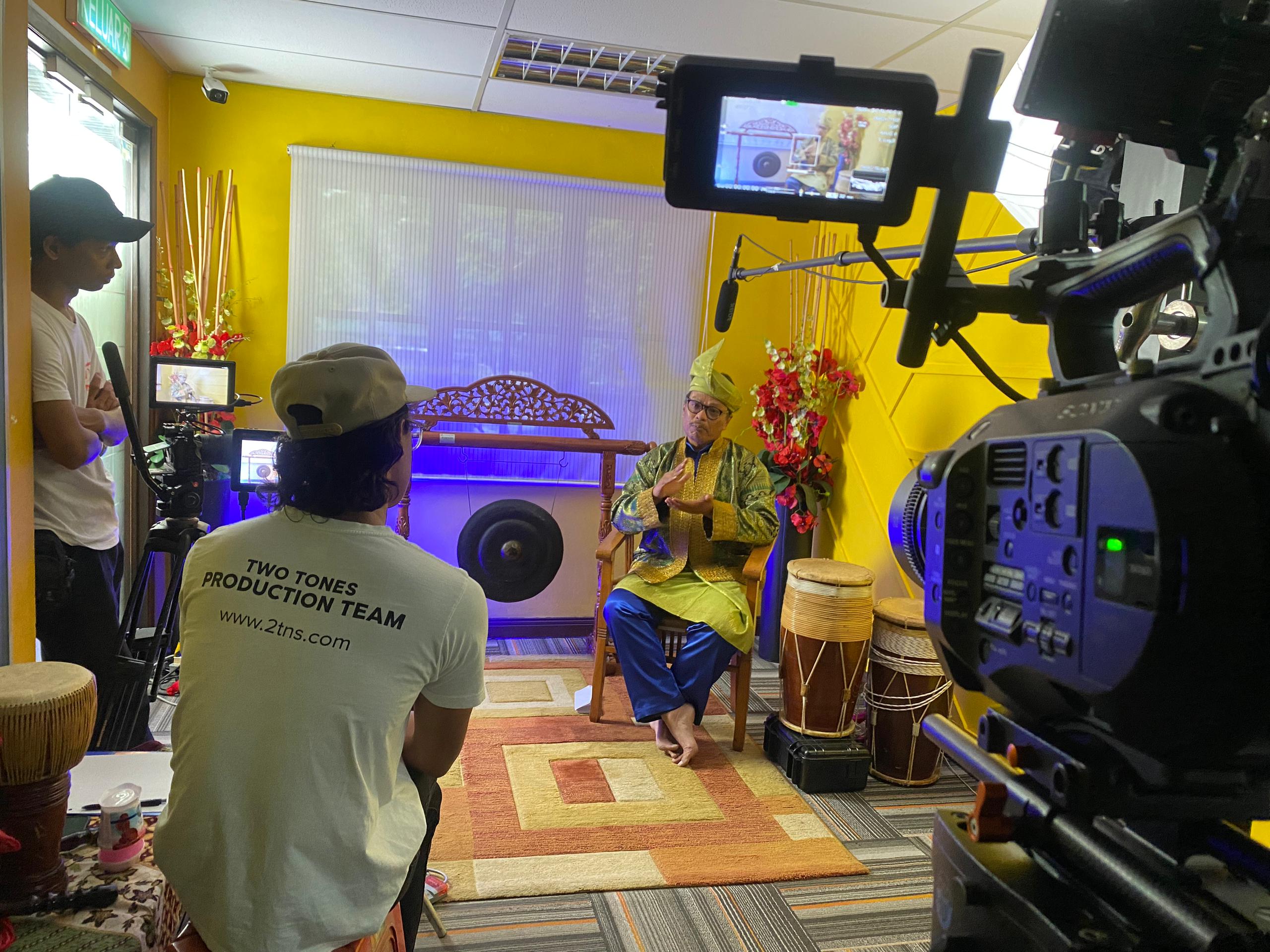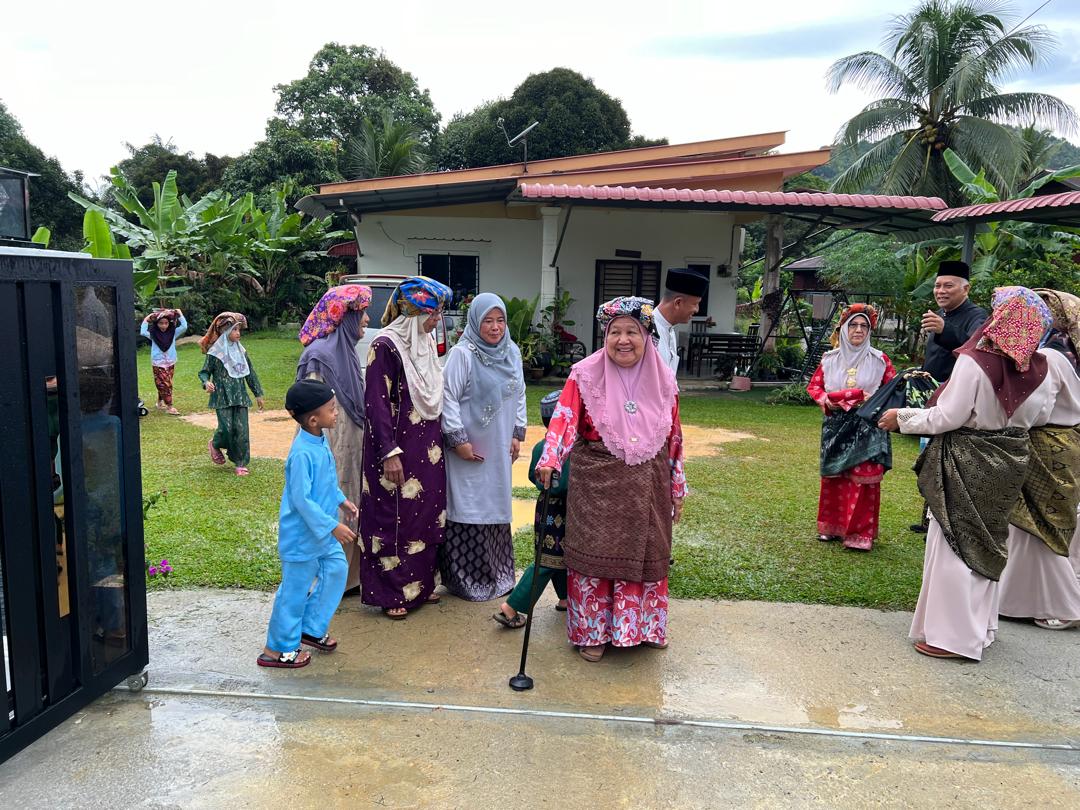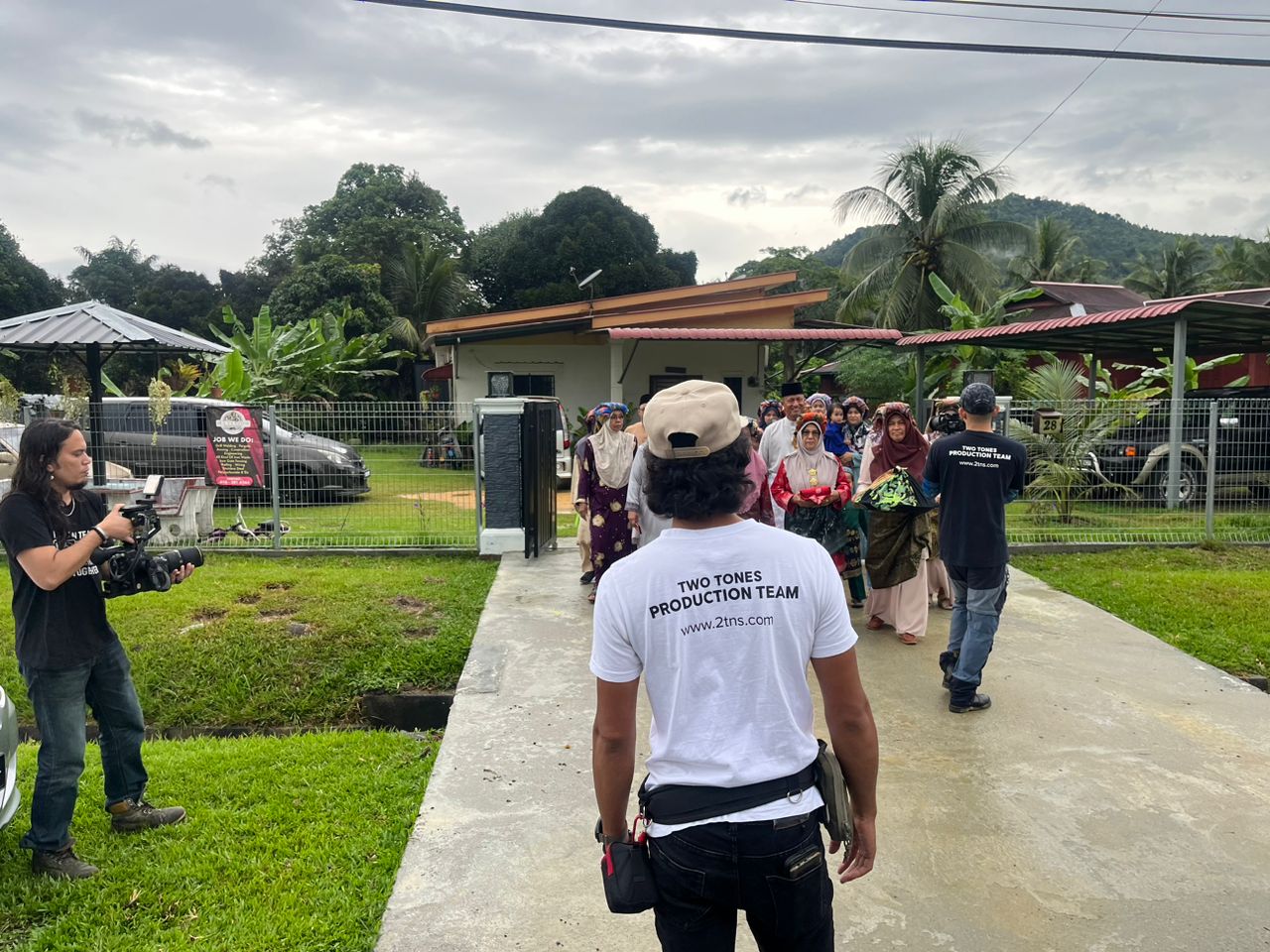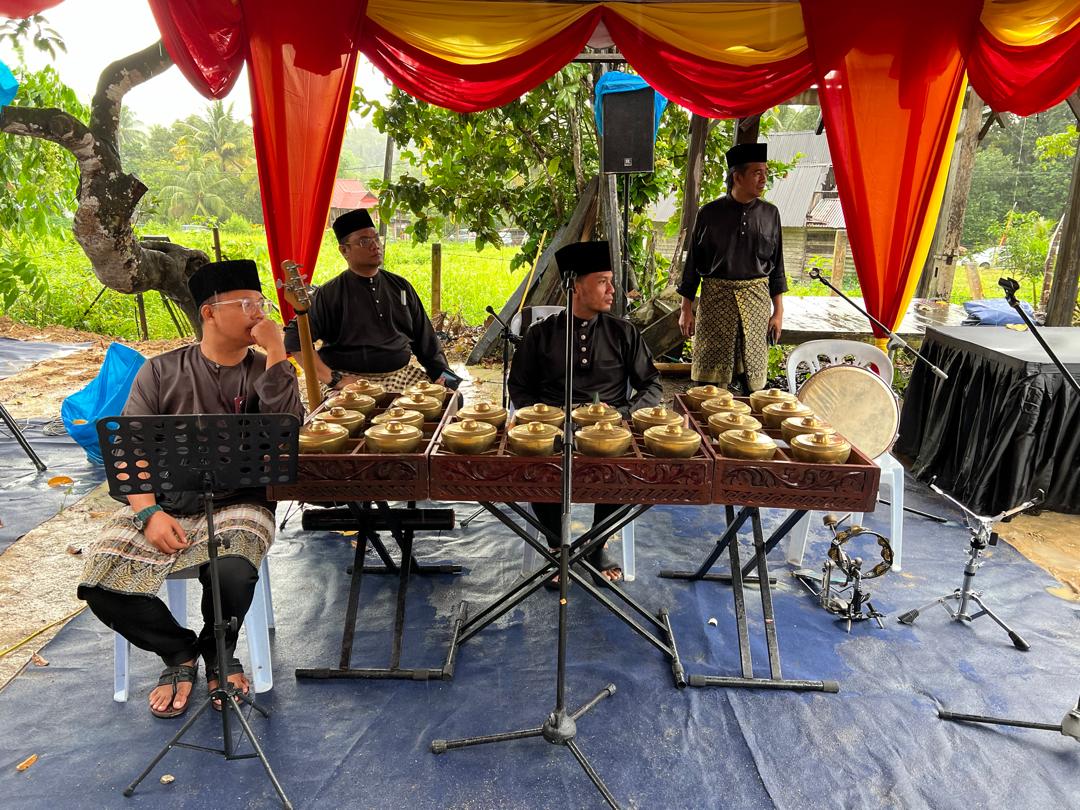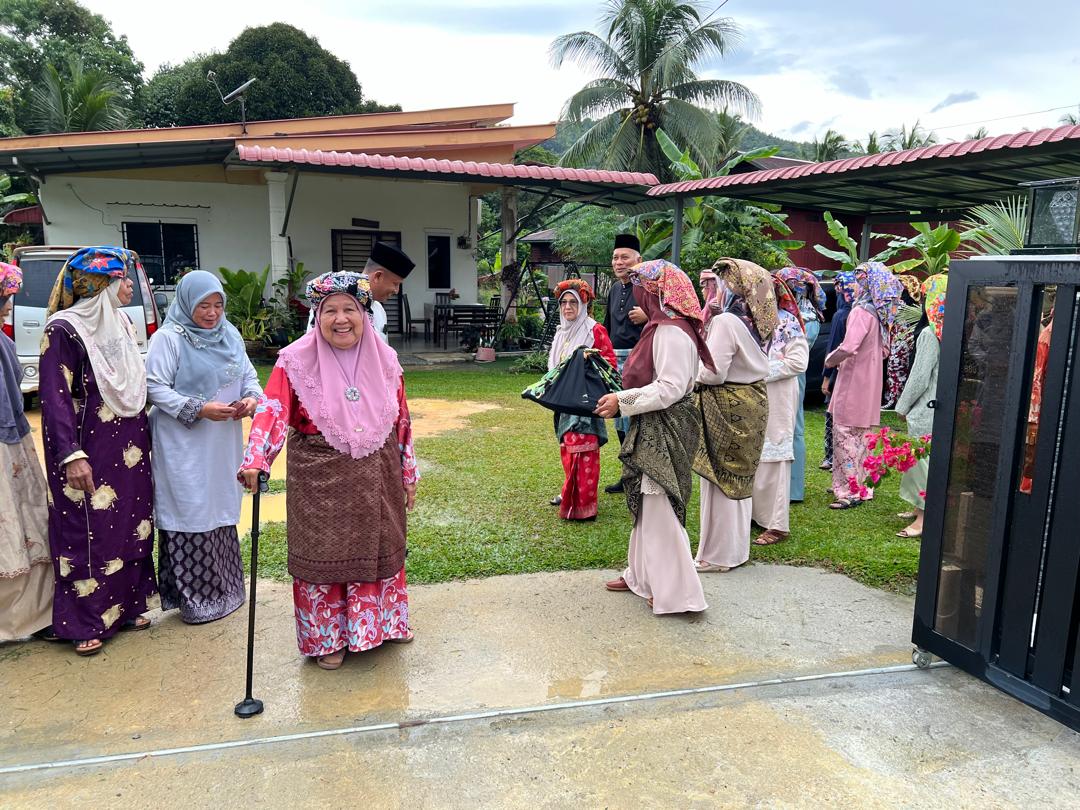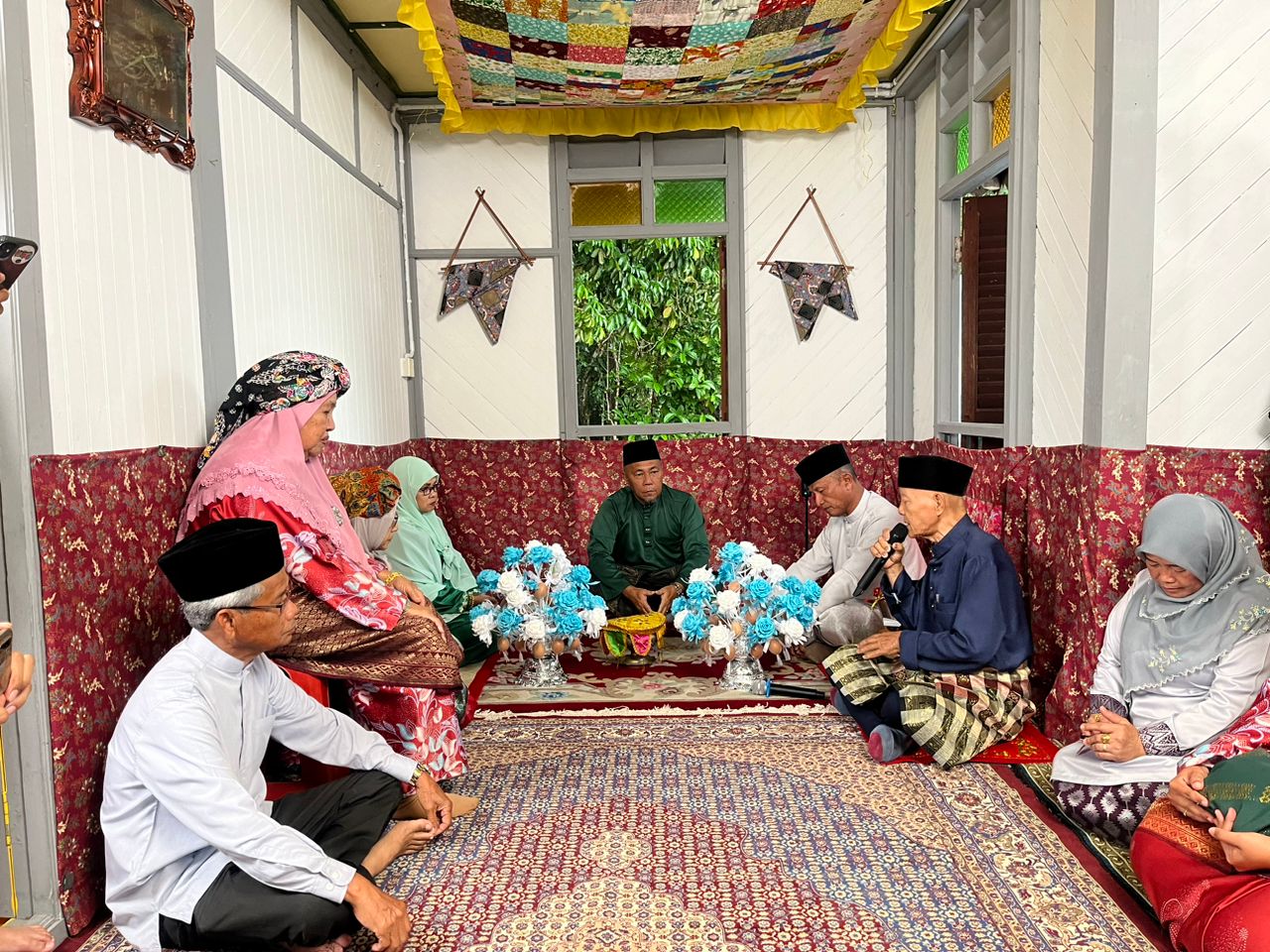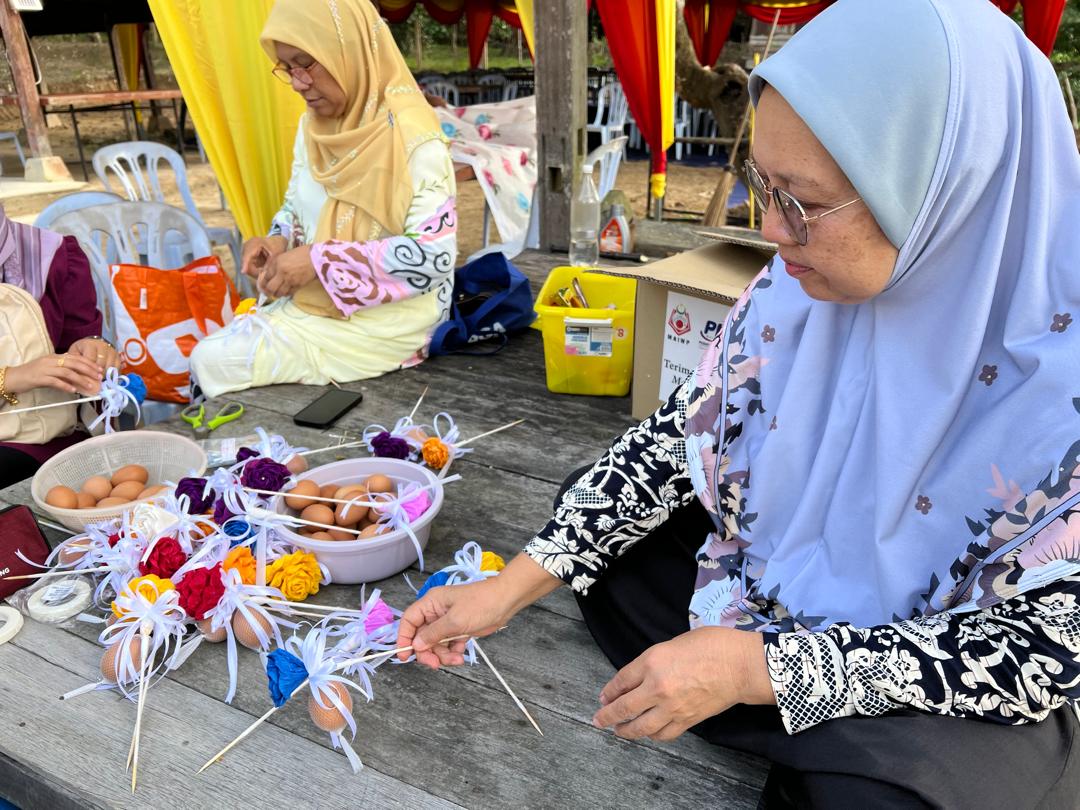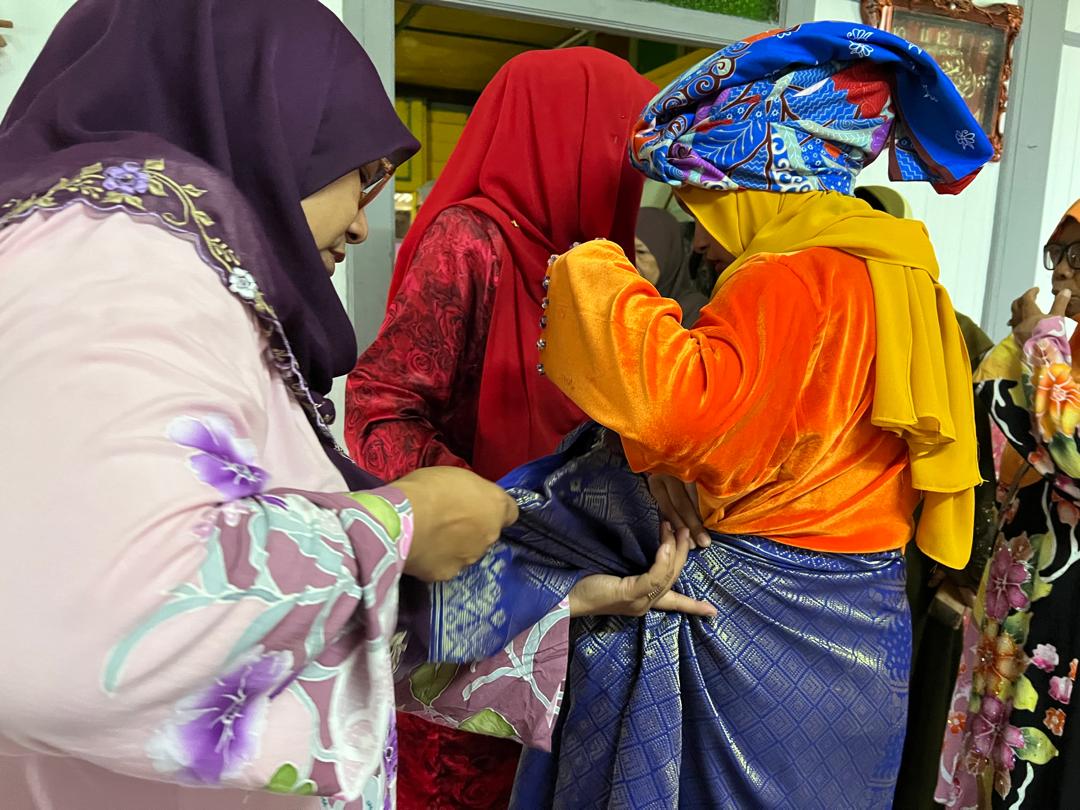ARTS AND CULTURE INFORMATION GATEWAY
Immerse yourself in the colorful world of art and culture! From traditional heritage to contemporary works, discover uniqueness that reflects the nation's identity and identity
ISTIADAT PEMEGANG PUSAKA ADAT BUAPAK SUKU MUNGKAL SRI PILAH PERUT KIRI LUAK ULU MUAR
Picture
15
Video
Available
Today's Visitor
73
Number of Visitors
1174
Introduction and history
The Istiadat Pemegang Pusaka Adat Buapak Suku Mungkal Sri Pilah Perut Kiri
Luak Ulu Muar is one of the significant legacies within the governance and kinship
system of the Adat Perpatih community in Negeri Sembilan. The Adat Perpatih
practiced has deep historical roots, originating from the Minangkabau culture,
which began migrating and settling in the region as early as the 12th century AD.
Chronologically, the Adat Perpatih predates the Common Law system, which only
emerged around 1066 AD in Europe.
As a matrilineal system, Adat Perpatih traces lineage through the maternal line,
forming the basis of inheritance and social groupings. The Adat Perpatih
community is organized into several main kinship groups known as suku (clans),
which are further subdivided into perut (subclans), ruang (lineages), and smaller
family units called rumpun (sublineages). Each group is led by its respective
customary leader:
Kodim – head of the sublineage (rumpun);
Besar – head of the lineage (ruang);
Buapak – head of the subclan (perut);
Lembaga – head of the clan (suku).
Within this hierarchy, the Buapak plays a vital role as the leader of the perut, a
subclan consisting of individuals descending from the same female ancestor. The
selection of the Buapak is conducted through mutual consensus among the
members of the perut, and his primary responsibilities include administering
customary affairs related to marriage, divorce, circumcision, hair-cutting
ceremonies, and other family matters. The authority of the Buapak is limited to his
perut, unlike the Lembaga, which oversees the entire clan.
Over time, the customs and rituals surrounding the selection of the Buapak have
remained a symbol of social structure preservation and the continuity of the Suku
Mungkal’s traditions under the governance of Luak Ulu Muar, Sri Pilah. Specifically,
within Luak Ulu Muar, this ceremony has been practiced since the 16th century,
reflecting the consolidation of the Adat Perpatih system in Negeri Sembilan as
adapted from Minangkabau cultural influences.
In addition to the Buapak, the institution of Ibu Soko also plays an important role,
particularly among women. The Ibu Soko is responsible for continuing the maternal
lineage, ensuring the well-being of the women within the perut, and serving as a
reference point in matters of custom and religion.
Overall, the existence of the Buapak institution in the Suku Mungkal not only
illustrates the continuity of tradition but also reflects the local wisdom of the Negeri
Sembilan community in preserving its unique cultural identity to this day.
In the social system of Adat Perpatih, the appointment of the Buapak is a crucial
requirement to ensure the continuity of family governance within a perut (subclan).
The Buapak is appointed to lead and serve as the trustee of adat (customary law),
playing a vital role in maintaining harmony and safeguarding the customs that have
been passed down through generations under the matrilineal lineage system. The
primary functions of the Buapak in the Suku Mungkal may be outlined as follows:
1. Family and Inheritance Management
As the head of the family within a perut, the Buapak is responsible for
managing family affairs, including the distribution of inherited property
based on the matrilineal principle. This distribution ensures that ancestral
property remains within the maternal lineage, through the core practice of
Adat Perpatih.
2. Conflict Resolution and Mediation
The Buapak serves as a mediator in resolving any disputes or conflicts
among members of the perut. He acts as the primary reference in
determining amicable solutions through mutual consultation, guided by existing customary principles.
3. Education and Guidance in Adat
The Buapak is responsible for educating and guiding the younger
generation to understand, appreciate, and practice the customs and cultural
values upheld by the Adat Perpatih community. He ensures that every new
generation remains connected to the knowledge and understanding of adat.
4. Liaison with the Lembaga and Authorities
In addition to leading his perut, the Buapak also serves as a representative
and liaison to the Lembaga Adat, Undang Luak, as well as religious and
state authorities in matters concerning the perut and suku (clan).
5. Preserver of Customary Heritage
The Buapak ensures the continuity of customary practices, particularly in
the implementation of significant ceremonies such as marriages, funerals,
family leadership appointments, hair-cutting ceremonies, circumcisions, and
other important adat events.
6. Selection and Appointment of Family Leaders
Through a customary process, the appointment of a Buapak is conducted in
a manner that ensures only qualified individuals who possess knowledge of
adat are respected and trusted by the members of the perut and are
entrusted with the leadership role.
In its entirety, the role of the Buapak extends beyond that of a family head; he is
also the guardian of adat sovereignty, the pillar of family structure, and the symbol
of cultural continuity that shapes the identity of the Adat Perpatih community to this
day.
The attire worn by the Buapak and customary dignitaries during the Inheritance
Ceremony is rich in symbolism, reflecting honor, dignity, and cultural heritage
passed down through generations. Every garment, accessory, and ornament
carries its meaning related to function, rank, and the values of the adat being
upheld.
Men's Attire (Buapak and Customary Dignitaries)
1. Tengkolok (Destar)
Made from black songket interwoven with gold threads, the tengkolok is
folded in a specific style to symbolize the rank and status of the adat
custodian.
2. Baju Melayu Cekak Musang
The main garment is the Baju Melayu Cekak Musang, traditionally in black,
representing solemnity and dignity.
3. Songket Waistcloth (samping songket)
The attire is completed with a samping made of black songket embroidered
with golden threads, worn around the waist.
4. Brooches and Shirt Buttons
These intricate accessories symbolize refinement, honor, and the fine
artistry of cultural heritage.
5. Songket Waist Belt
The belt secures the samping neatly, serving both as a functional and
symbolic element of the Buapak's ceremonial attire.
6. Keris (Dagger)
Worn at the waist, the keris symbolizes the sacred legacy of Adat Perpatih
and the authority entrusted to the Buapak.
7. Ceremonial Sash
Draped over the shoulder, the sash signifies the official acceptance and
recognition as the custodian of the perut and the adat.
8. Gemstone Ring
Worn as a symbol of inherited legacy, signifying the continuous
transmission of customary responsibility through generations.
Women's Attire (Ibu Soko and Female Customary Representatives)
For women participating officially in the ceremony, particularly the Ibu Soko and
female adat representatives:
1. Long Kebaya or Baju Kurung
Made from black fabric, either with fine motifs or plain designs, signifying
modesty and dignity.
2. Songket Waistcloth (Samping Songket)
Worn outside the kebaya, the samping is made of black songket
embroidered with golden threads, enhancing the formality and elegance of
the attire.
3. Telepok (Head Covering)
A batik cloth worn on the head. Historically, the telepok served as a
headcovering to preserve the modesty and honor of the Ibu Soko.
4. Dokoh (Tiered Necklace)
Worn as a multi-layered chest ornament, symbolizing grace and rank.
5. Ceremonial Sash
Draped across the shoulder to signify the official recognition and authority
of the Ibu Soko.
The entire ceremonial attire not only reflects visual elegance but also symbolizes
identity, respect for adat, and the unity of the community in preserving and
continuing its cherished cultural traditions.
In this ceremony, a variety of traditional ceremonial items and materials are used to
symbolize customary values and reinforce the sacred responsibilities entrusted to
the Buapak. Each item prepared for the ceremony carries its own unique function
and meaning, contributing to the overall sanctity and solemnity of the ritual. The
ceremonial items include:
1. Bunga Manggar (Decorative Palm Flowers)
Placed at the entrance or along the ceremonial pathway, these decorations
symbolize festivity, blessing, and the auspicious nature of the ceremony.
2. Tepak Sireh (Betel Nut Container)
Traditionally filled with betel leaves, lime paste, areca nut, gambier, and
cloves, representing respect, hospitality, and cultural refinement.
3. Bunga Pahar (Decorative Egg Bouquets)
Brightly colored decorations are placed as embellishments to enhance the
visual splendor of the ceremony.
4. Sireh Junjung (Betel Leaf Arrangement)
Beautifully stacked betel leaf arrangements symbolizing blessing, etiquette,
and the formal acceptance of the Buapak's mandate.
5. Merewar (Traditional Ornaments)
Additional decorative elements are used to complete the ceremonial
space’s visual aesthetic.
6. Tabir Lelangit (Ceiling Drapes)
Fabric drapes hung above the ceremonial space, symbolizing protection
and the formal recognition of the adat custodian.
7. Tilam Panda (Ceremonial Cushion)
A cushion used for the Buapak to sit on during the formal appointment
ceremony, representing dignity and sanctity.
8. Tikar Rompok (Traditional Mat)
A mat spread on the floor for seating or as a ceremonial platform, signifying
cleanliness, order, and the sanctity of the ceremonial area.
9. Lancang (Miniature Traditional Boat)
Symbolizes the journey and responsibility that the newly appointed Buapak is about to undertake.
10. Keris (Ceremonial Dagger)
Represents power, courage, and responsibility. The keris is formally
presented to the Buapak as a symbol of the authority and duties conferred.
11. Glass Tableware
Used during the ceremonial banquet, symbolizing grace, hospitality, and
honor in welcoming guests.
12. Duit Masmana (Ceremonial Money)
Symbolizes prosperity and the completion of customary transactions, often
presented during the formal handing-over of authority as a token of
acceptance.
Although there are no strict regulations mandating the use of musical instruments
in the appointment ceremony of the Buapak, certain traditional musical
performances are often included to enliven the atmosphere, enhance the grandeur
of the ceremony, and reflect its solemn significance. Among the musical
instruments commonly used are:
1. Kompang (Frame Drum Ensemble)
Played to accompany the ceremonial procession of the newly appointed
Buapak, members of the suku, and customary dignitaries, adding rhythm
and festive spirit to the event.
2. Serunai (Traditional Reed Instrument)
The serunai produces melodic, soulful tunes that accompany the course of
the ceremony, creating a sacred ambiance and elevating the aesthetic
grace of the occasion.
3. Nafiri (Ceremonial Trumpet)
The nafiri is typically played at the peak moments of the ceremony,
generating an aura of majesty, honor, and the formal elevation of the
Buapak's status.
The Ceremony is conducted in a highly orderly and traditional manner, beginning
with early preparations and continuing until the conclusion of the event. Each
segment of the ceremony holds deep symbolic meaning, reflecting the refinement
of Adat Perpatih culture in honoring the appointment of the adat custodian.
Segment One: Procession of Arrival
The ceremony begins with a formal procession, accompanied by the melodic
sounds of Pacik music. The newly appointed Buapak is escorted by members of
the perut (subclan) and other attendees who carry the ceremonial items, which
include:
2 Bunga Manggar (decorative palm flowers)
2 sets of Sireh Junjung (betel leaf arrangements)
2 Tepak Sireh (betel nut containers)
4 sets of Bunga Pahar (decorative egg bouquets)
The procession serves as a symbol of honor and celebration, illustrating the community's acceptance of the newly appointed adat custodian.
Segment Two: Welcoming at the Rumah Adat
Upon arrival at the Rumah Adat (Anjung), the new Buapak is welcomed by the Ibu
Soko, who scatters Beras Kunyit (turmeric rice grains) as a symbol of purification,
blessing, and prosperity. Inside the anjung, a panel of adat dignitaries awaits,
consisting of:
Dato Buapak Suku Mungkal Sri Pilah Perut Kanan
Orang Besar Waris
Tok Waris
Orang Seresam
Orang Semenda
These individuals serve as principal witnesses and play significant roles in the
execution of the appointment ceremony.
Segment Three: The Appointment Ceremony
Once everyone has taken their designated positions, the formal appointment
proceedings commence:
Declaration of Appointment
Tok Waris officially announces the appointment of the new Buapak of the
Suku Mungkal Sri Pilah Perut Kiri Luak Ulu Muar.
Presentation of the Songkok (Headgear)
Dato Buapak Suku Mungkal Sri Pilah Perut Kanan places the songkok on
the newly appointed Buapak as a symbol of formal confirmation and
respect within the adat structure.
Presentation of Wang Masmana (Ceremonial Money)
Wang Masmana is presented as a symbol of prosperity, blessing, and the
formalization of the appointment, serving also as a token of acceptance in
certain customary practices.
Presentation of the Keris (Ceremonial Dagger)
Tok Waris presents the Keris Pusaka to the Buapak, symbolizing power,
responsibility, and the sacred duties entrusted to him.
Segment Four: The Loyalty Oath Ceremony (Menyembah)
Following the formal appointment, the ceremony continues with the Menyembah
ritual, in which members of the Suku Mungkal Sri Pilah Perut Kiri Luak Ulu Muar
pay homage as a gesture of loyalty to the newly appointed Buapak. The ritual is
initiated by the Ibu Soko, representing the women of the suku.
Segment Five: Closing and Communal Feast
The ceremony concludes with an official address by the newly appointed Buapak
of the Suku Mungkal Sri Pilah Perut Kiri Luak Ulu Muar, followed by a traditional
banquet as a sign of gratitude and a symbolic expression of unity within the
community.
a) Name: Dr. Ahmad Rashidi Hassan
b) Address: Lot 1198, KM 20, Jalan Seremban - Kuala Pilah 71500 Tg. Ipoh
Negeri Sembilan
c) Phone Number: 01165625009
d) Email: kelabteaterasar@gmail.com
e) Association: Kelab Teater Asar Negeri Sembilan
Reference Source
i. Bahan Bacaan
Maamor, F. R., & Taif, B. (2019). Analisis visual buah buton di Luak Tanah
Mengandung, Negeri Sembilan sebagai simbol organisasi sosial dalam
masyarakat Adat Perpatih (Visual analysis on buah button in Luak Tanah
Mengandung, Negeri Sembilan as social organization symbol in Adat
Perpatih society). Asian Journal of Environment, History and Heritage, 3(2).
Radzi, N. S. M., & Yusoff, M. Y. M. (2023). Adat Perpatih di Luak Johol,
Negeri Sembilan: Peranan Ibu Soko. Jurnal Wacana Sarjana, 7(3), 1–13.
Salleh, R. M. (2017). Sejarah pengamalan Adat Perpatih di Negeri
Sembilan. Kuala Lumpur: Jabatan Muzium Malaysia.
Zakaria, A., & Berawi, M. M. (2017). Busana tradisional Negeri Sembilan.
Sintok: UUM Press.
Wain, A., & Saleh, N. (2024). Adat Perpatih in Malaysia: Nature, history,
practice, and contemporary issues. In Matrilineal, matriarchal, and
matrifocal Islam: The world of women-centric Islam (pp. 43–75). Cham:
Springer Nature Switzerland.
ii. Tokoh (jika ada temu bual tokoh)
Dr. Ahmad Rashidi Hassan. Kelab Teater Asar Negeri Sembilan. Lot 1198,
KM 20, Jalan Seremban - Kuala Pilah 71500 Tg. Ipoh Negeri Sembilan.
Location
State JKKN Contact Information
Rosdianah binti Roman
Cultural Officer
Jabatan Kebudayaan dan Kesenian Negara, Negeri Sembilan
Kompleks JKKN Negeri Sembilan
Jalan Sungai Ujong
70200 Seremban
NEGERI SEMBILAN DARUL KHUSUS
06-767 6793/763 6308 / 761 0593
Use the form below to contact the Informant/Figure/Editor/Researcher directly. We will respond to your inquiry as soon as possible!

 No 33 Persiaran Perpaduan 3, Taman Perpaduan, 31150, Perak Darul Ridzuan
No 33 Persiaran Perpaduan 3, Taman Perpaduan, 31150, Perak Darul Ridzuan